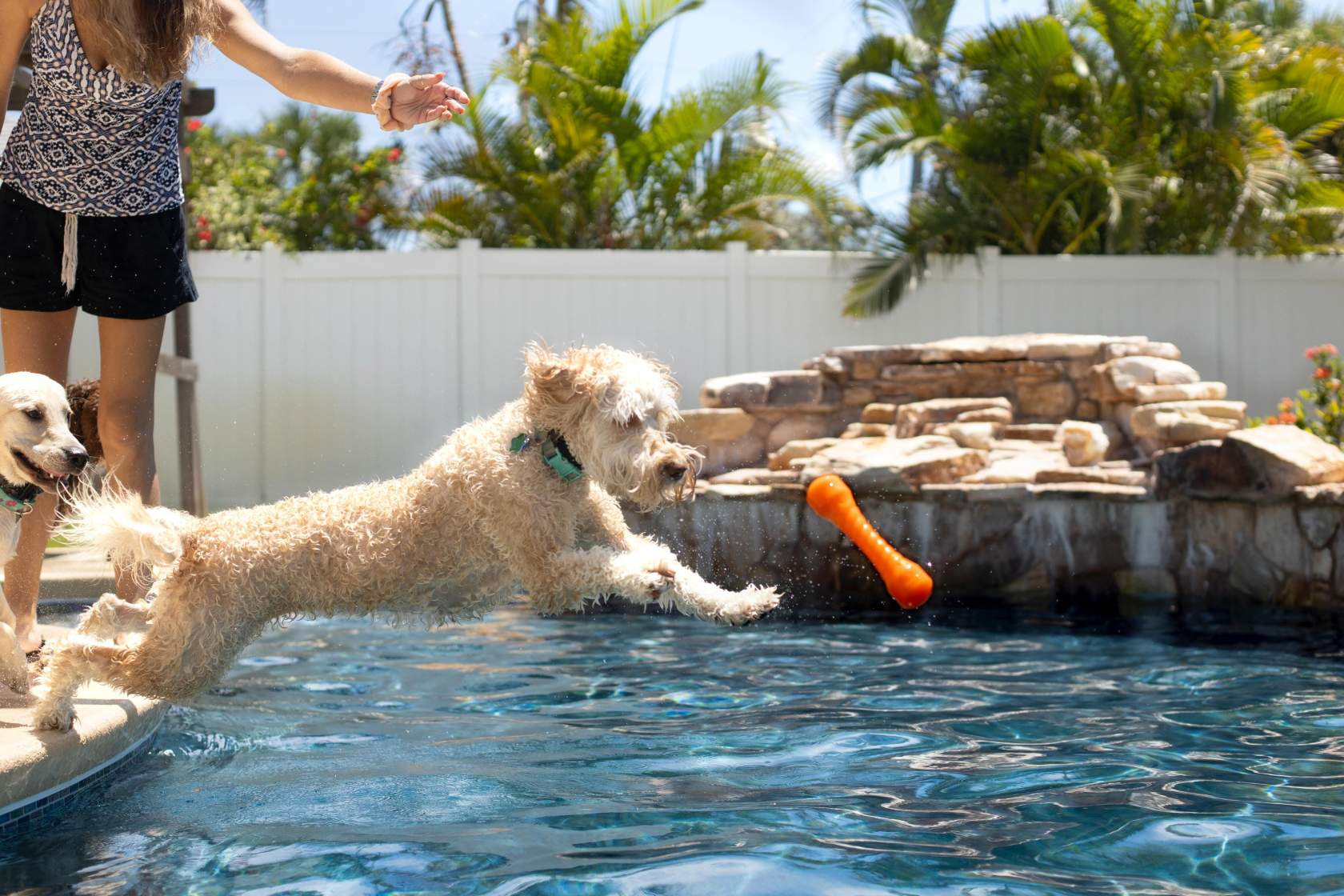

Pool Safety & Maintenance For Dog Owners
What is the best way to make a pool safe for dogs? It's a common question that any pool+pooch owner should ask at one point or another. One of the most loveable traits of dogs is their willingness to jump headfirst into just about anything. Seeming to be without a care in the world and always with a smile (or something equivalent) on their face. This trait that endears canines to us humans is also one of the reasons why it's part of our job to look out for dogs. This is especially true when it comes to pool safety and maintenance around the home. So let's check out what you need to do to make sure your pool is a safe haven for your furry friend.
Chemicals
Pool chemicals are a necessary and fairly unavoidable part of pool ownership. As pools are not drained and refilled after use like a bathtub, the water has to be treated in order to avoid algae and other bacteria. The most common pool chemical you'll see or have heard of is chlorine. Chlorine is a pretty strong chemical and although the amount that is administered to swimming pools is non-toxic, it still certainly has its drawbacks. The need to wash your skin as well as your bathers (if you follow the manufacturer's guidelines), after swimming in chlorinated pools should give some indication of it not being entirely ideal for human skin.
For dogs, who are more sensitive than humans in many respects, this is also true. Dog's sensitive eyes and ears can sometimes be irritated by chlorinated water and can also lead to red spots and rashes. Wet, chlorinated dog hair is a breeding ground for bacteria and also needs to be washed after a dip.
So what can be done? One answer to this problem is a salt water pool chlorinator. Yes, I know that says chlorinator but hear me out! Salt water systems work differently to classic chlorine systems in a few ways. To start with salt water systems use a specific pool-grade salt that is fed into the system. That salt is subjected to a chemical reaction that produces chlorine to be fed into the pool. What's important is that the end result of this process is a lot less chlorine in the pool overall, less of a chlorine smell, and less irritation to the eyes and skin. This is the case for both dogs and people.
Another option is a chemical called bromine. This is a common alternative to chlorine additives as it is also a less harsh chemical than chlorine. It has several other benefits as well, such as being effective for a longer period than chlorine, being kinder on skin and eyes, having less of a smell than chlorine and also having the added benefit of being low in pH. This means that less chemicals are required to balance the pool’s pH levels after adding bromine.
Dog Behaviour Training
Dog's are amazing pets also in part because of their ability to learn and be trained. But it's on us as owners to take the time to train our pups so that they can be safe around the water. Most dogs see a big pool of water and think it's time for a big drink — especially in summer. Though this likely won't cause serious harm to your dog, it can definitely upset their stomach. Having your dog's actual waterbowl nearby the pool is a good way to discourage chlorinated hydration.
As a general rule, when your dog is near the family pool, it's best to treat them much like you would a young child. Introducing dogs to the pool gently and gradually is the best way to be sure they're comfortable. Making sure they know the way out is important, as most dogs will struggle to use the sides of the pool to get out, and need to know where the stairs are.
If you're looking for more information about making your pool safe for everyone (including the dog!) then get in touch with one of our professional pool and spa providers. Happy paddling!
